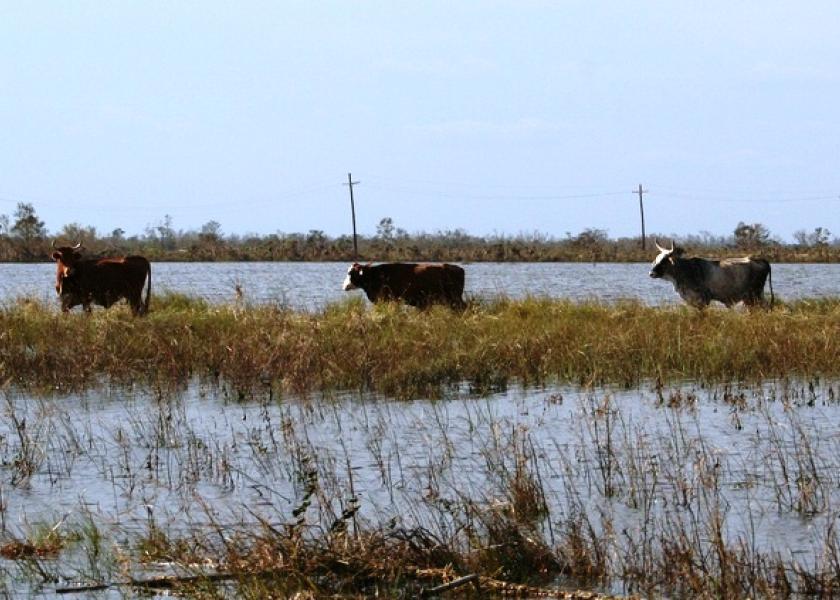Texas Ranchers Urged to Remove Livestock from Low-lying Areas

Emergency management officials are advising landowners in five Texas counties to remove livestock from flood-prone areas due to excessive rainfall upstream over the last three days.
Counties impacted are Liberty, Victoria, Montgomery, Lavaca and Calhoun.
“Runoff is occurring from heavy rain upstream, and flooding is imminent over the weekend into next week,” said Monty Dozier, Ph.D., Texas A&M AgriLife Extension Service Disaster Assessment and Recovery, DAR, program director, Bryan-College Station. “Livestock need to be moved to higher ground immediately to prevent the need for animal issues response over the next few days.”
Moving livestock to high ground will help ensure their safety and reduce or prevent the need for responses like high-water rescues. Ranchers needing assistance are urged to contact their local AgriLife DAR/AgriLife Extension county agent.
Jordan Baze, AgriLife Extension DAR recovery coordinator and state operations liaison, Austin, said this also applies to new landowners who may not have experienced high-water-level flooding since acquiring acreage.
“With the bulk of the rain forecasted to end over the course of the next 24 hours, runoff is expected to continue to create moderate-to-major flood stages across Texas rivers,” Baze said.
Reporting damage
Texans can report weather damage to homes and businesses using the Individual State of Texas Assessment Tool, iSTAT, damage survey. The iSTAT damage survey can be filled out in English and Spanish online by clicking on “January 21st – Ongoing Severe Weather.”
The details provided to the Texas Division of Emergency Management, TDEM, in the iSTAT damage survey help emergency management officials gain an understanding of damages that have occurred and identify any immediate resource needs. Survey information also helps officials determine whether the state meets federal requirements for various forms of disaster assistance.
Reporting damage through the iSTAT tool is a voluntary activity and is not a substitute for reporting damage to your insurance agency. It does not guarantee disaster relief assistance. English and Spanish tutorial videos explaining how to fill out iSTAT surveys are available at damage.tdem.texas.gov.
Remain prepared
Texans are encouraged to remain prepared and informed, continue to monitor local weather reports, and follow instructions from local officials. Residents can access additional flood safety information by visiting TexasReady.gov.
Flood recovery and additional resources are also available on the Texashelp website.







